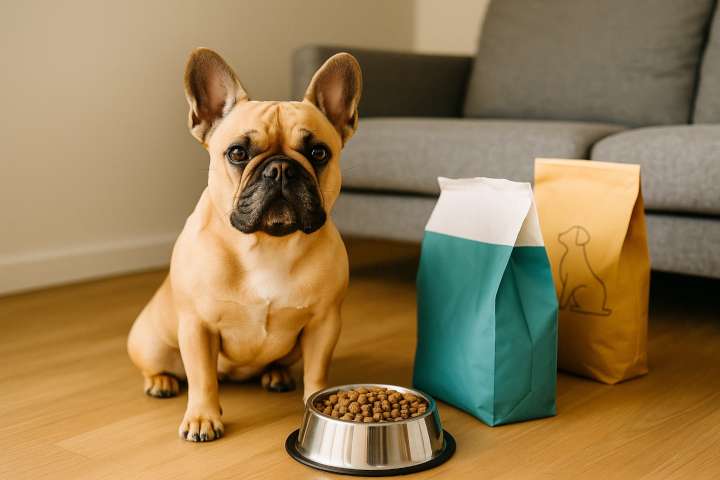Switching your dog’s food might seem simple, but doing it too quickly can lead to digestive upset, including diarrhea, vomiting, or loss of appetite. Whether you’re changing brands, switching to a different protein, or moving from puppy to adult food, a gradual transition is key to keeping your dog healthy and happy.
In this guide, you’ll learn how to safely transition your dog to a new food—step by step—plus tips for picky eaters, sensitive stomachs, and common mistakes to avoid.
Why You Should Transition Slowly
Your dog’s digestive system is sensitive to change. Sudden switches can disrupt the balance of gut bacteria, leading to:
- Loose stools or diarrhea
- Vomiting
- Gas or bloating
- Reduced appetite
- General discomfort or refusal to eat
A gradual transition gives your dog’s body time to adapt to the new ingredients and nutrient profile.
The 7-Day Transition Plan
Here’s the most commonly recommended vet-approved schedule:
Day | Old Food | New Food |
|---|---|---|
Day 1–2 | 75% | 25% |
Day 3–4 | 50% | 50% |
Day 5–6 | 25% | 75% |
Day 7+ | 0% | 100% |
Mix both foods thoroughly at each stage, and monitor your dog’s stool, energy level, and appetite throughout the week.
Tips for a Smooth Food Transition
✅ 1. Feed at Consistent Times
Stick to regular feeding times (2–3 times a day). This builds routine and helps your dog adjust faster.
✅ 2. Keep Water Available at All Times
Hydration supports digestion—especially important during food transitions.
✅ 3. Use High-Quality, Compatible Foods
- Life stage (puppy, adult, senior)
- Breed size
- Health conditions or sensitivities
If switching to a raw, fresh, or grain-free diet, consult your veterinarian first.
What If My Dog Refuses the New Food?
Dogs may resist unfamiliar smells or textures. Try this:
- Warm the new food slightly to enhance aroma
- Add a spoonful of wet food or bone broth
- Reduce treats temporarily to increase mealtime hunger
- Stay consistent—don’t give up after one or two refusals
Avoid “buffet feeding” multiple options, which can create pickiness.
Transitioning for Special Diets
🐶 Sensitive Stomachs
Go even slower—extend each step to 3–4 days instead of 2. Consider adding a probiotic to support gut health during the transition.
🐶 Prescription Diets
Always follow your vet’s instructions. Sudden switches can interfere with treatment or symptom management.
🐶 Puppy to Adult or Adult to Senior Food
Transition over 10–14 days if possible. This gives their body time to adapt to changing calorie and nutrient levels.
Signs the Transition Is Going Well
If your dog:
- Solid, well-formed stools
- Normal appetite and energy
- No vomiting or digestive upset
- Enthusiasm at mealtimes
If everything looks good by Day 7, you can switch fully to the new food.
Conclusion
Changing your dog’s food isn’t just about picking the right brand—it’s about introducing it the right way. A slow, thoughtful transition ensures a happy tummy, a smoother adjustment, and better long-term health.
Want a printable 7-day food switch chart or feeding log? Visit our Dog Nutrition Toolkit to download free resources and meal planners.

